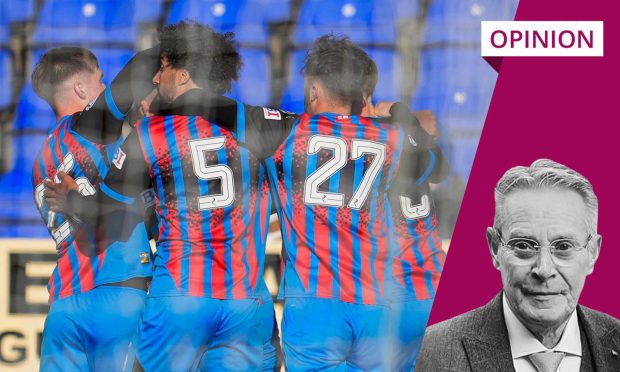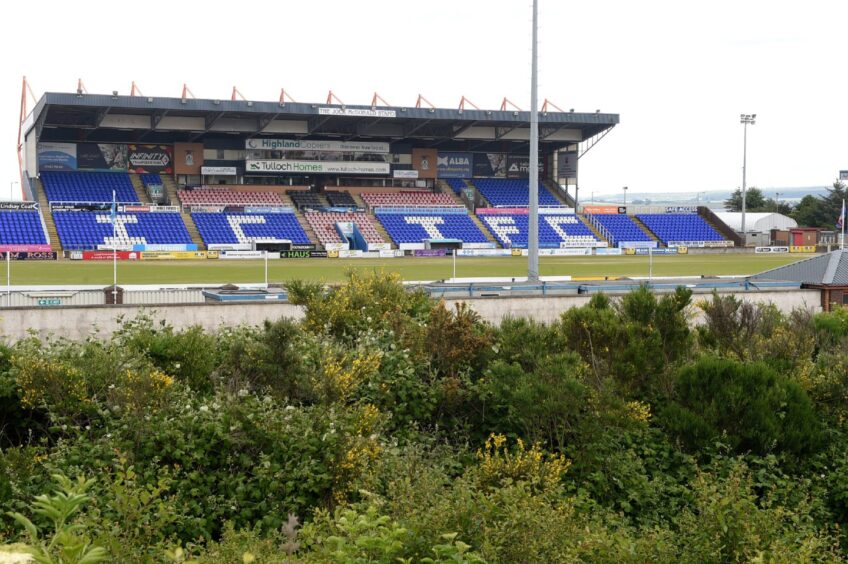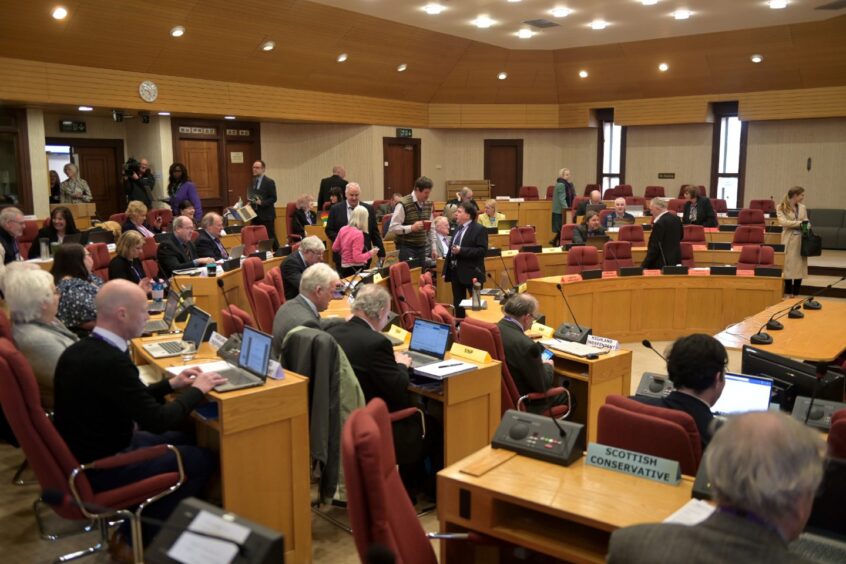I recall with a mixture of joy and sadness one of the most significant events in Inverness Caledonian Thistle’s turbulent history two decades ago.
It came to mind while surveying the mess the club is in now.
Facing its most difficult match: a game of survival as it tries to escape the clutches of financial administration and insolvency.
The change in fortunes for ICT – and Aberdeen FC at the other end of the satisfaction scale, for that matter – reinforces the importance of football to the Highlands and north-east.
Whether you like football or not, these clubs have a direct economic effect on our everyday lives in local communities.
And they encourage a powerful sense of community togetherness.
For the Dons and the Caley Jags, it’s a modern-day Tale of Two Cities; they really are experiencing “the best of times and the worst of times” right now.
I think back to almost 20 years ago when Inverness was smiling from ear to ear on a very special day.
I was in the stands at the Caledonian Stadium as joyous fans celebrated playing their first game in the SPL on home turf thanks to a quickfire refurbishment of the ground to meet crowd regulations.
They had previously had a ground share agreement with Aberdeen at Pittodrie.
What an unforgettable and wonderful atmosphere that was on a January day in 2005.
It’s odd how some images such as this stick in the mind like a picture flashing up on a television screen.
Sad moments, too, after they plummeted downhill recently.
Inverness Caledonian Thistle’s name offers a clue to powerful community ties born out of a merger between two of the most-loved old Highland clubs.
I heard UK Culture and Sport Secretary Lisa Nandy the other day extolling the importance of football clubs to “every city, town and village” in the land.
She was ushering in legislation for a football regulator to police things like football finances in England, but it was of more than passing interest to Scotland given the precarious state of clubs like Caley Thistle.
The irony in her words was that clubs are relying constantly on available disposable income among ordinary “working people” to buy tickets and merchandise.
But fans are now squeezed indirectly by her government’s Budget, which was not supposed to damage ordinary “working people”.
A healthy fan base, owners with deep pockets and lucrative sponsorship deals are football’s essential “triple lock”.
How Caley Thistle could do with something like Aberdeen FC’s “spezial” red trainers by Adidas, which have been flying out the door.
You’d think they were lined with gold leaf with the eye-watering sell-on prices they are now fetching online.
Caley Thistle should be getting more support from the council
Struggling clubs have to look elsewhere for help, too.
The local council maybe?
Nobody could accuse Highland Council of not doing its bit in the past.
It ploughed huge amounts of public cash into making sure the new stadium came into being all those years ago.
You’d think that would be a good reason to protect the public’s investment by keeping the club going.
But it’s a private company; some might say it should stand on its own feet.
Yes, but it’s a private company offering a very important local public service; just like regional news media, for example.
The curious thing is that Highland Council is blocking a project which could solve Caley Thistle’s financial crisis and keep it in business.
Surely planners have to take into account the economic benefits?
These decisions several months ago have taken on life-or-death significance after the club’s subsequent slide towards oblivion.
After rejecting an energy plan purported to make the club millions, the council is inadvertently in danger of switching the lights off at Caledonian Stadium.
The fate of the project might also be a major factor in attracting new owners or frightening them off.
Quite rightly, the decision is being challenged by the club and a Scottish government planning reporter is expected to make a decision in weeks.
Highland Council has got recent form with planning muddles: it was forced into a humiliating climbdown over a controversial Inverness traffic plan after a court challenge.
The battery-storage plan provoked noise pollution worries from neighbours; these have to be addressed effectively or an alternative site sought.
Surely planners also have to take into account major economic benefits?
Like the sustainable climate-friendly nature of the project and potential economic boost for the club and community.
The main objection by council planners was that the development would eat up green space.
If they don’t sort this out quickly they’ll have plenty of new green space between Moray Firth and Inverness – where the club used to be.
David Knight is the long-serving former deputy editor of The Press and Journal



Conversation